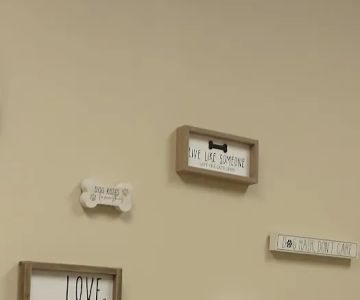How to Choose the Right Cat Food for Your Pet
As a cat owner, one of the most important decisions I’ve made for my pet is choosing the right cat food. I’ll never forget the first time I brought home a bag of food for my kitten, Whiskers. I was overwhelmed by the sheer number of options available in the pet store, all claiming to be the “best” choice for cats. After a bit of trial and error, I learned that choosing the right food for my furry friend is more about understanding her specific needs than simply picking up the most popular brand. In this article, I’ll walk you through everything I’ve learned about selecting the best cat food, so you can feel confident in your choice for your own pet.
1. Understanding Your Cat’s Nutritional Needs
Before I even began looking at the labels, I needed to understand what nutrients my cat required. Every cat has different needs, and knowing these will guide you in choosing the right food. I remember consulting my vet about Whiskers’ age, weight, and health to determine her nutritional requirements. It’s crucial to know that cats are obligate carnivores, which means their diet must be primarily protein-based. So, the first step is understanding your cat’s nutritional needs.

3892 Communication Blvd. Bldg. 1425, Wright-Patterson AFB, OH 45433, USA
See Details1.1 Protein: The Essential Building Block
Protein is the cornerstone of any good cat food. Cats require high levels of protein to support their energy levels, muscle growth, and overall health. I’ve noticed that Whiskers is more active and has shinier fur when her diet is rich in animal-based proteins, such as chicken, turkey, or fish. When choosing cat food, I look for meat listed as the first ingredient, not fillers like corn or wheat. This ensures that the food is protein-rich and better suited to her natural diet.
1.2 Fats: Healthy Fats Are Important
Fats are another essential part of your cat’s diet. They provide energy and help keep their coat soft and shiny. I found that Whiskers’ coat looked noticeably better when I switched to food with omega-3 and omega-6 fatty acids, which help promote skin health. Look for labels that include sources of healthy fats like fish oil or chicken fat to ensure your cat gets the nutrition they need.
1.3 Carbohydrates: A Little Goes a Long Way
While cats don’t require carbohydrates as a primary source of energy, some grains or vegetables in their food can be beneficial in moderation. However, I’ve learned that the best cat foods limit the use of fillers like corn or soy, as these can be hard for cats to digest. I try to choose foods with low carbohydrate content, focusing more on protein and fats. But I also keep an eye out for high-quality vegetables like sweet potatoes or peas, which provide fiber without being too heavy on carbs.
2. Types of Cat Food: Wet vs. Dry
Once I understood what nutrients my cat needed, the next challenge was deciding between wet and dry food. Each type of food has its pros and cons, so it’s important to choose based on your cat’s individual needs. For Whiskers, I’ve found that a combination of both works best.
2.1 Wet Cat Food: The Hydration Boost
Wet cat food is a great option for cats who don’t drink enough water, which is a common issue among felines. Since cats have a low thirst drive, incorporating wet food into their diet ensures they’re getting extra moisture, which is especially important for urinary tract health. I remember when Whiskers had some issues with her urinary tract, and my vet suggested adding more wet food to her diet. Not only did she seem to enjoy it more, but she also had fewer issues with dehydration.
2.2 Dry Cat Food: Convenient and Cost-Effective
On the other hand, dry food has its benefits. It’s often more affordable and convenient to store, and it helps keep your cat’s teeth clean by reducing tartar buildup. I’ve found that mixing some dry food with wet food gives Whiskers the best of both worlds. However, I always make sure she has access to fresh water at all times, as dry food alone won’t provide sufficient hydration.
3. Special Diets: Catering to Health Conditions
If your cat has any health concerns, such as allergies, obesity, or sensitivities, choosing the right food becomes even more critical. For example, Whiskers once developed a skin allergy, and after consulting with our vet, I switched her to a limited-ingredient diet. I also learned that some cats are sensitive to grains, so I looked for grain-free formulas, which helped alleviate her symptoms.
3.1 Allergy-Friendly Cat Foods
If your cat shows signs of food allergies, such as itchy skin, digestive upset, or excessive grooming, a special allergy-friendly formula might be the solution. These foods often have a single animal protein source, such as chicken or lamb, and no grains, dairy, or artificial additives. I’ve found that these formulas work wonders for cats with sensitive stomachs.
3.2 Weight Management
If your cat is overweight or prone to gaining weight, choosing food specifically designed for weight management is key. These formulas are often lower in calories and contain added fiber to help your cat feel full without overeating. When Whiskers started gaining weight, I switched to a high-protein, low-calorie option, and it helped her maintain a healthy weight.
4. Reading Cat Food Labels: What to Look For
Once I understood my cat’s nutritional needs and the different types of food available, I had to get familiar with reading labels. Pet food manufacturers often use fancy marketing terms that can be confusing. But over time, I learned how to read the ingredient list and nutritional information so that I could make the best choices for Whiskers.
4.1 Ingredient List
Always start with the ingredient list. The first few ingredients are the most important. I look for named animal proteins (like chicken, turkey, or fish) at the top of the list, as this indicates a higher quality food. Avoid foods that list by-products, fillers, or vague terms like “meat meal” or “animal digest.”
4.2 Guaranteed Analysis
The guaranteed analysis on the label tells you the percentage of nutrients in the food, including protein, fat, fiber, and moisture. I compare this with the recommended nutritional guidelines from my vet to ensure Whiskers is getting the right balance.
4.3 Additional Considerations
Watch out for foods with added artificial colors, preservatives, or flavors. These ingredients provide little nutritional value and may be harmful to your pet. I prefer to choose natural, high-quality foods that don’t contain unnecessary additives.
5. Trial and Error: Finding the Right Brand
Choosing the right food is a bit of a trial-and-error process. Even after researching, I had to experiment with different brands and types of food before I found one that Whiskers really loved and that worked well for her. I recommend starting with smaller bags of different foods to see which one your cat prefers and reacts well to. This approach helps avoid wasting money on large bags of food that your cat won’t eat.










